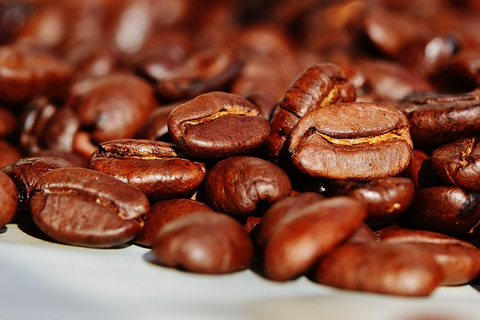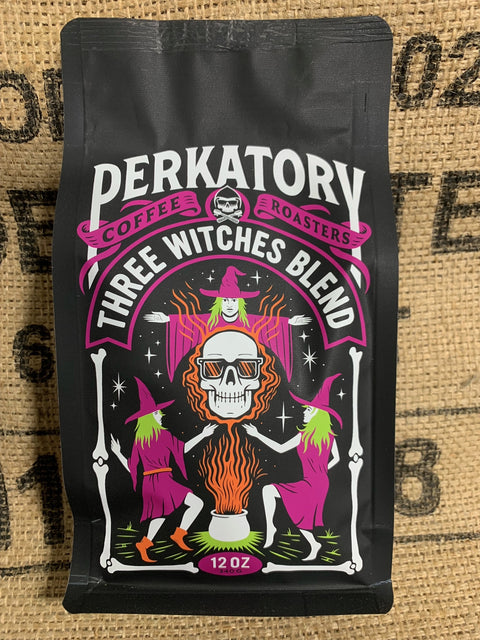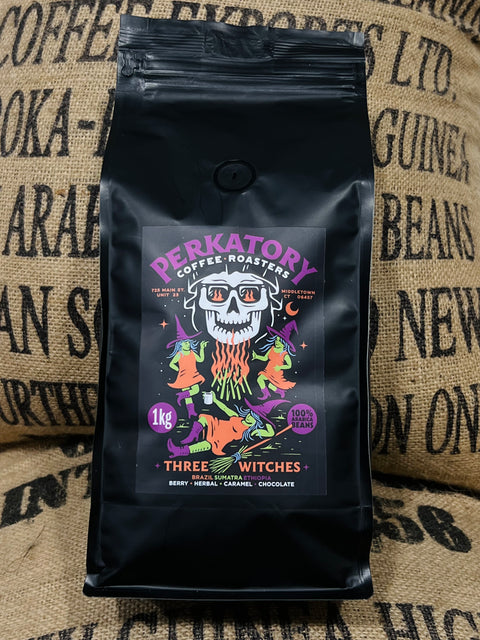Coffee roasting has been around for centuries, with evidence dating back to the 9th century in Yemen. The process of roasting coffee beans has evolved over time, from using simple methods such as heating them in a pan to more advanced techniques used today.
Roasting coffee beans is not just about transforming raw green coffee beans into flavorful brown beans, but it is also an essential step in the coffee-making process. The way coffee beans are roasted can greatly impact the taste, aroma, and overall quality of a cup of coffee.
In this guide, we will explore the world of professional coffee bean roasting and provide you with all the information you need to get started on your own roasting journey.
Understanding Coffee Beans

Coffee beans are the seeds of the coffee plant that grow inside the plant's fruit, commonly known as "coffee cherries." There are two main types of coffee beans: Arabica and Robusta.
Arabica beans
Arabica beans, renowned for their exceptional quality, constitute approximately 60% of global coffee production. These beans boast a more intricate and delicate flavor profile in comparison to Robusta beans, making them the preferred selection for specialty coffee. With their distinctive characteristics and refined taste, Arabica beans elevate the coffee experience to new heights.
Robusta beans
Robusta beans, known for their hardiness and ease of cultivation, have gained popularity in commercial coffee production. These beans possess a stronger, more bitter taste and a higher caffeine content compared to Arabica beans.
When it comes to the art of roasting, the type of bean used plays a pivotal role in determining the final roast profile. Each variety of bean boasts its own distinctive characteristics, necessitating different roasting methods to bring out their full potential and flavors.
Equipment Needed for Roasting Coffee Beans
To roast coffee beans professionally, you will need specific equipment that can handle high temperatures and allow for precise control over the roasting process.
Here is a list of essential equipment needed to roast coffee beans:
- Roasting Machines: This is the primary tool used to roast coffee beans. The type of roaster you choose will depend on the volume of beans you plan to roast, your budget, and the level of control you desire over the roasting process.
- Thermometer: A high-quality thermometer is crucial for monitoring the temperature within the roasting machine. This helps to ensure that the roasted beans are even and at the correct temperature.
- Scales: Precision scales are needed to measure the amount of coffee beans prior to roasting. This helps to ensure consistency in the roasting process.
- Cooling Tray: After the beans have been roasted, they need to be cooled down quickly to stop the roasting process. A cooling tray helps to rapidly lower the temperature of the beans.
- Storage Containers: After roasting, coffee beans need to be stored properly to preserve their freshness. Airtight containers are recommended for this purpose.
- Grinder: Once the beans are cooled and rested, they'll need to be ground before brewing. The type of grinder you choose should match the brewing process you intend to use.
With these tools, you'll be well-equipped to start your journey in coffee bean roasting. However, keep in mind that practice makes perfect, and it may take some roast time to master the art of roasting.
Step-by-Step Guide to Roasting Coffee Beans

Before roasting your raw coffee beans, it is essential to properly prepare them by removing any debris or defective beans and ensuring they are all of similar size. This will help ensure an even roast.
During the roasting process, the beans are subjected to high temperatures, triggering a sequence of chemical reactions that enhance their flavor and produce wanted aroma compounds. This process typically takes 10-15 minutes and involves monitoring the temperature and adjusting it as needed.
Determining the Level of Roast
The level of roast is often referred to as "roast profile" and can greatly impact the taste of your roast coffee. Different roast levels can bring out different flavors and aromas, from the bright and acidic taste of a light roast to the bold and smoky notes of a dark roast.
To achieve your desired roast level, you will need to monitor the temperature closely and stop the roasting process at the right roast time. A digital thermometer can be helpful to measure roast degrees.
Cooling the Beans
After achieving the desired roast level, it is imperative to swiftly cool the beans to halt the roasting process. This crucial step ensures the preservation of flavors and aromas, elevating the quality of the final product. This can be achieved by transferring them to a dedicated cooling tray or utilizing an external fan for efficient cooling.
After this crucial step, it is essential to allow the beans to rest for a minimum of 12 hours before grinding and brewing. This resting period is necessary to enable the flavors and aromas to fully develop, resulting in a more satisfying and enjoyable cup of coffee.
Storing Roasted Coffee Beans
Properly storing roasted coffee beans is crucial to preserving their exceptional freshness and full-bodied flavor. To ensure their optimal quality, it is highly recommended to store them in an airtight container, preferably made for coffee storage.
Find a cool and dark spot, away from any moisture or direct sunlight, as these elements can quickly degrade the beans. By taking these simple steps, you can savor every cup of coffee with the utmost delight.
Brewing Your Roasted Coffee Beans
Brewing with freshly roasted beans can greatly enhance the taste of your coffee. The flavors and aromas are at their peak during the first few days after roasting, so it is best to wait a couple of days before brewing.
To get the most out of your freshly roasted beans, it is essential to brew them correctly. This includes using the right grind size, water temperature, and brewing method.
Stages of Coffee Roasting

A coffee roaster must consider 10 distinct stages in the process, each crucial to achieving the desired result:
- Drying Process: This initial roasting stage involves removing moisture from the coffee beans, and preparing them for the roasting process.
- Yellowing: The beans start to turn a yellowish color as they continue to lose moisture and undergo chemical changes.
- First Crack: This is the first audible crack that occurs during roasting, indicating that the beans are expanding and releasing steam. It marks the beginning of the development stage.
- Early Roast: At this roasting stage, the coffee beans have reached a light brown color and have a dry surface. They have a mild flavor and aroma.
- Cinnamon Roast: The beans are roasted to a light brown color resembling cinnamon. This roast level produces a delicate flavor with high acidity.
- City/Medium Roast: The beans have a medium brown color and are roasted to the point where their natural flavors are fully developed. This roast level offers a balanced taste with moderate acidity.
- Full City/High Roast: The beans have a darker brown color and possess a fuller body and stronger flavor. They may exhibit some oil on the surface.
- Light Roast: The beans are roasted to a dark brown color, characterized by a light sheen of oil. This roast level offers a bittersweet flavor profile.
- Full Roast: The beans have a very dark brown color and a shiny appearance due to the release of oils. This roast level produces a rich and intense flavor.
- French Roast: The roasted beans that have a deep, dark brown color. This roast level results in a smoky and bold flavor.
During each stage of the coffee bean processing, from growing to roasting, a fascinating transformation occurs that unveils a multitude of distinctive flavors and captivating aromas. This meticulous journey from bean to cup offers coffee enthusiasts an array of taste experiences, ranging from delicate floral notes to rich and bold profiles. With every sip, one can savor the complexity and nuance that each stage contributes to the final cup of coffee.
Visit Perkatory Coffee Roasters for Coffee Making Tips
Now that you have a basic understanding of the coffee roasting process, why not take your knowledge to the next level by visiting Perkatory Coffee Roasters, an artisanal coffee shop that specializes in small-batch roasting and offers a variety of brewing methods? Our expert baristas are always happy to share their tips and techniques for making the perfect cup of coffee.
So, whether you're a coffee enthusiast looking to improve your home-roasting skills or a professional roaster wanting to expand your knowledge, Perkatory Coffee Roasters is the perfect place for you. Come visit us and discover the art of roasting coffee beans!
Conclusion
In conclusion, this comprehensive guide has equipped you with the essential knowledge and tools required to embark on your coffee roasting journey. Starting with the appropriate roasting equipment, we've explored the step-by-step process of roasting coffee beans, highlighting the importance of preparation, monitoring temperature, determining the level of roast, cooling, and proper storage. We've emphasized the significance of brewing your fresh roasts correctly for an optimal coffee experience. Understanding the distinctive and sequential stages of coffee roasting, from drying to the dark French roast, you can appreciate the scientific art that is coffee roasting, which results in varying flavor profiles. Finally, we've invited you to continue exploring coffee roasting at Perkatory Coffee Roasters, where experts are eager to share their experience and knowledge. This guide is not just about the process; it's about the passion found in every freshly brewed cup from your home-roasted beans.
Frequently Asked Questions (FAQs)
What is the right temperature for roasting coffee beans?
The ideal roasting temperature for coffee beans can vary depending on factors such as the type of beans and the desired roast level. While there is no one-size-fits-all approach, a general guideline is to roast the beans within a temperature range of 370°F to 540°F. This allows for flexibility and experimentation to achieve the perfect balance of flavors and aromas in your coffee.
How long do roasted coffee beans stay fresh?
If properly stored in an airtight container and away from direct sunlight, roasted coffee beans can maintain their freshness for up to a month. However, to truly savor the best flavor and aroma, it is highly recommended to consume them within the first two weeks after roasting. This ensures the optimal taste experience that coffee enthusiasts crave. Enjoy your cup of freshly roasted goodness!
What's the difference between a light roast and a dark roast?
When it comes to coffee, a light roast is known for its distinctive acidity and the ability to preserve the unique flavor profile of the beans. On the other hand, a dark roast boasts a bold and robust flavor, with a hint of bitterness and less acidity. Ultimately, the decision between the two often boils down to personal taste and preference. So, whether you prefer the bright and vibrant notes of a light roast or the bold intensity of a dark roast, there's a coffee experience tailored just for you.



